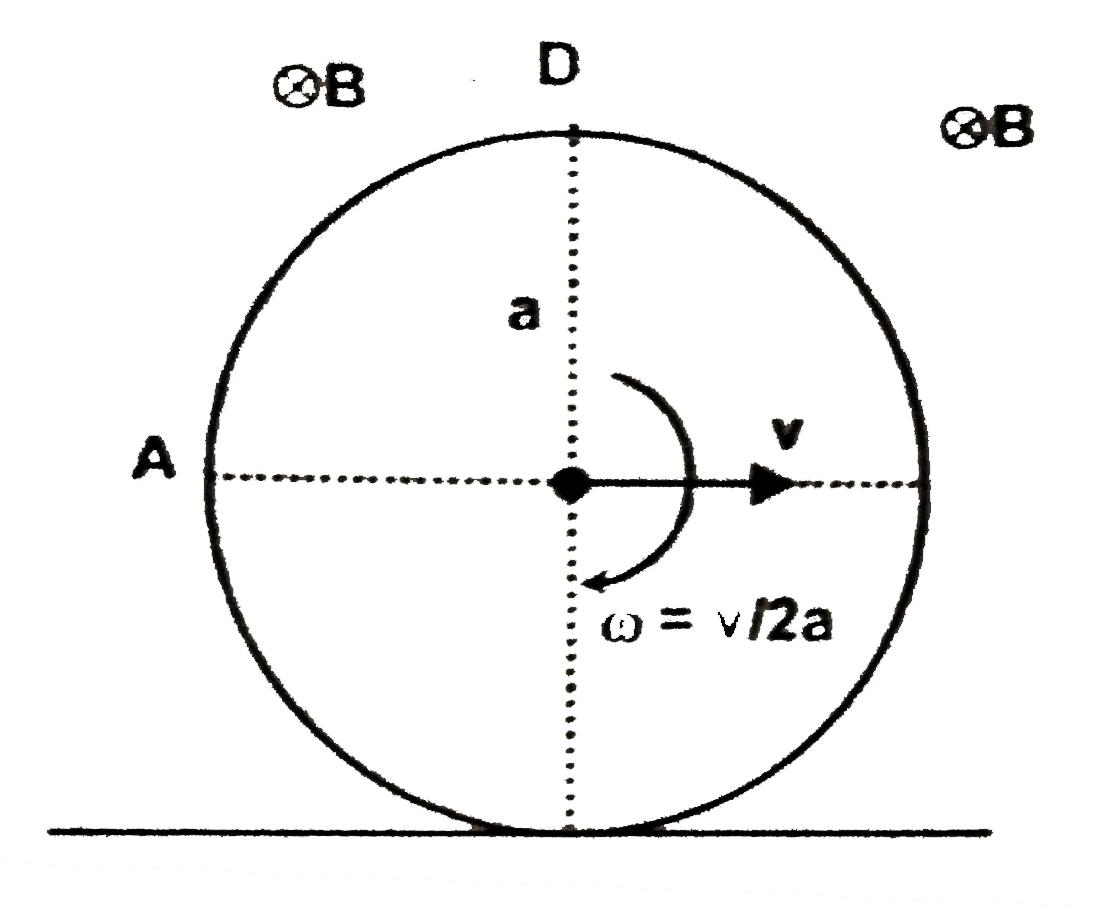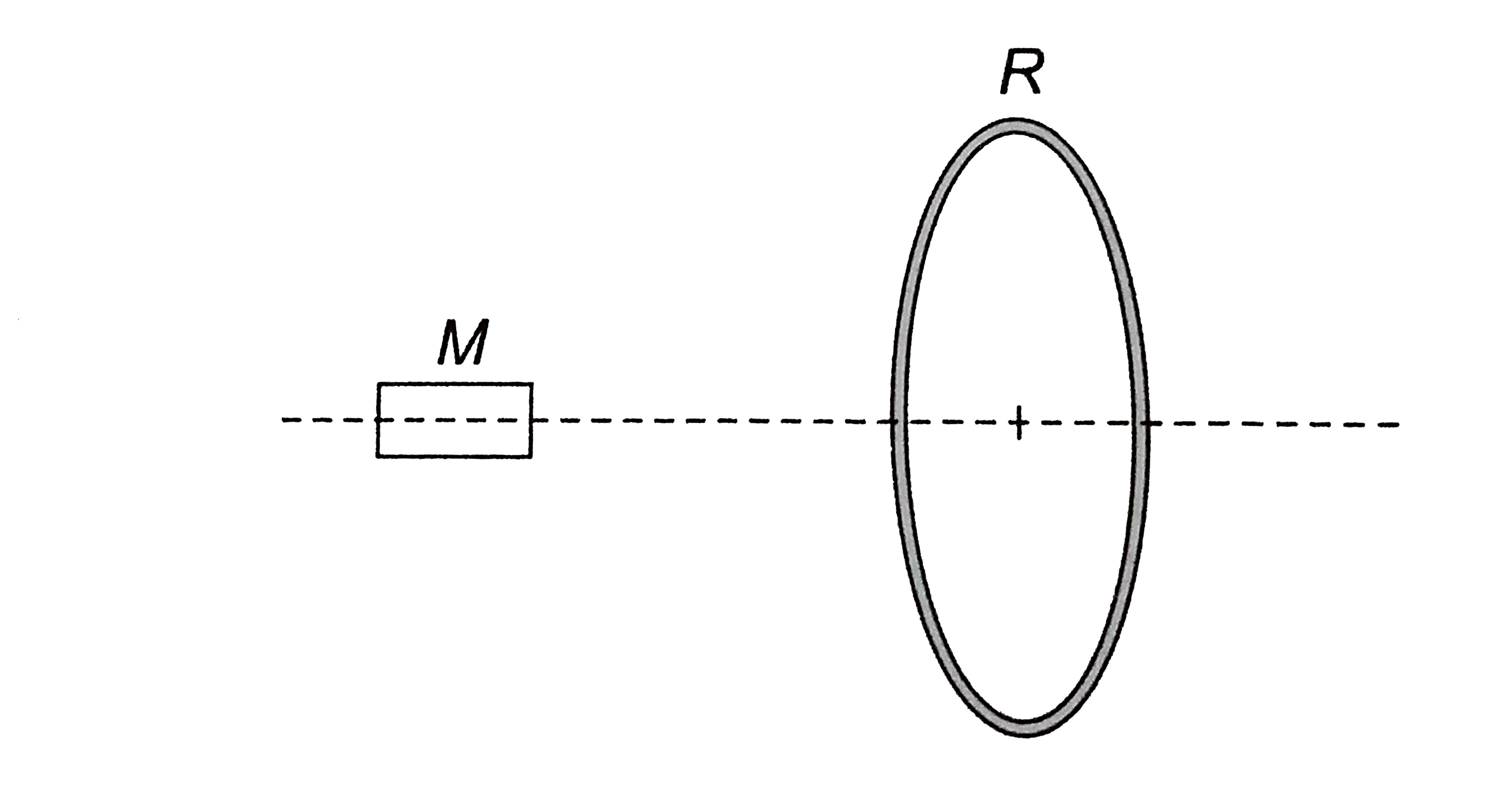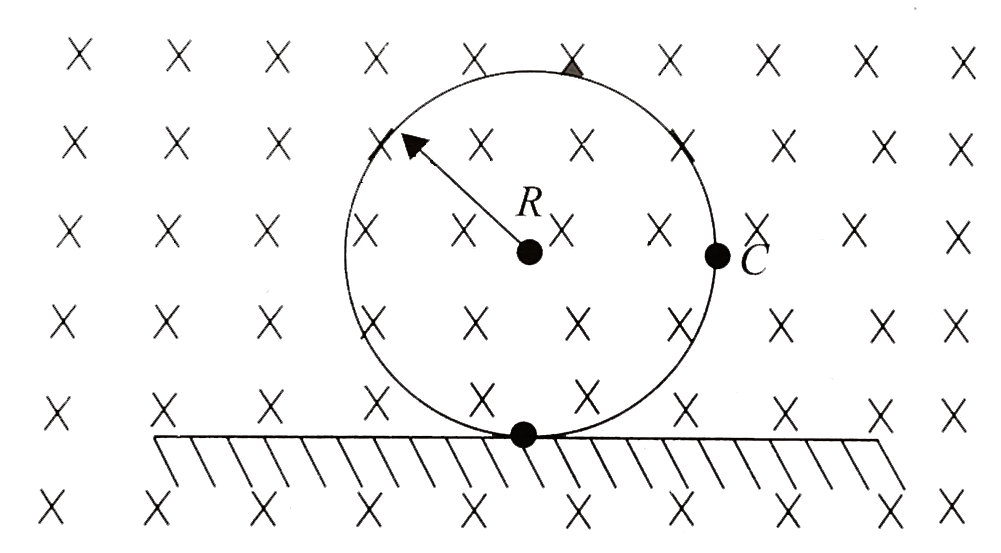A metal rod of mass m can rotate about a horizontal axis O, sliding along a circular conductor of radius a (fig). The arrangment is located in a unifrom magnetic field of induction B directed perpendicular to the ring plane. The axis and the ring are connected to an emf source to form a circuit of resistance R. Neglecting the friction, circuit induction and ring resistance, find the law according to which the source and must very to make the rod rotate with a constant angular velocity ω.

As the rod rotates, an emf.
ddt12a2θ.B=12a2Bω
is induced in it. The net current in the conductor is then ξ(t)−12a2BωR
A magnetic force will then act on the conductor of magnitude BI per unit length. Its direction will be normal to B and the rod and its torque wil be
∫a0⎛⎝ξ(t)−12a2BωR⎞⎠dxBx
Obviously both magnetic and mehanical torque acting on the C.M. of the rod must be equal but opposite in sense. Then
for equilibrium at constant ω
ξ(t)−12a2BωR.Ba22=12mgasinωt
or, ξ(t)=12a2Bω+mgRaBsinωt=12aB(a3B2ω+2mgRsinωt)
(The anser given in the book in incorrect dimensionally.)
Topper's Solved these Questions
- ELECTRODYNAMICSBook:IE IRODOV, LA SENA & SS KROTOVChapter:ELECTRODYNAMICSExercise:Motion Of Charged Particle In Magnetic Field
Explore 36 Videos
- ELECTRODYNAMICSBook:IE IRODOV, LA SENA & SS KROTOVChapter:ELECTRODYNAMICSExercise:Constant Magnetic Fiels - Magnetics
Explore 69 Videos
- ELECTRICITY AND MAGNETISMBook:IE IRODOV, LA SENA & SS KROTOVChapter:ELECTRICITY AND MAGNETISMExercise:All Questions
Explore 6 Videos
- ELECTROMAGNETISMBook:IE IRODOV, LA SENA & SS KROTOVChapter:ELECTROMAGNETISMExercise:All Questions
Explore 24 Videos
Similar Questions
A rod of mass m can rotate without friction about axis sliding (also without friction) along a conducting ring of radius b arranged in a vertical plane as shown in the . The entire arrengement is placed in a uniform magnetic field with the inducetion B perpendicular to the plane of the ring. The axis and the conductor are connected to teh terminals of a current source. Determine
(a) according to which law current I flowing in the rod must vary for the rod to rotate at a constant angular speed. Being to measure the time from the instant when the rod is in its right-hand horizontal position. Consider the current to be positive when it flows from the axis of rotation toward the ring.
(b) what emf E of the source must be applied to maintain the required current? Consider the total resistance of the circuit to be constant and equal to R. Disergard the inductance of teh circuit.

View SolutionA thin non-conducting ring of mass m carrying a charge q can freely rotate about its axis. At t=0, the ring was at rest and no magnetic field was present. Then suddenly a magnetic field B was set perpendicular to the plane. Find the angular velocity acquired by the ring.
View Solution
Knowledge Check
A conducting ring is placed in a uniform magnetic field with its plane perpendicular to the field . An emf is induced in the ring if
AIt is rotated about it axisBit is translatedCit is rotated about a diameterDit is deformed
A circular conducting ring of radius 'a' is rolling with slipping on a horizontal surface as shown. A uniform magnetic field B is existing perpendicular to the plane of motion of the ring. The emf iniduced between the points A and D of the ring isABωa2B2Bωa2C4Bωa2D6Bωa2A metal ring of radius r=0.5m with its plane noraml a unifrom magnetic field B of induction 0.2T carries a current I=100A The tension in newtons develoed in the ring is
A100B50C25D10
A horizontal ring of radius r spins about its axis with an angular velocity ω in a uniform vertical magnetic field of magnitude B. The emf induced in the ring is
View SolutionA conducting ring R is placed on the axis of a bar magnet M. The plane of R is perpendicular to this axis, M can move along this axis.

View SolutionA conduting ring R is placed on the axis of a bar magnet M . The plane of R is perpendicular to this axis. M can move along this axis

View SolutionA ring of radius R is rolling on a horizontal plane with constant velocity v. There is a constant and uniform magnetic field B which is perpendicular to the plane of the ring. Emf across the lowest point A and right-most point C as shown in the figure will

View SolutionA semicircle conducting ring of radius R is placed in the xy plane, as shown in Fig. A uniform magnetic field is set up along the x-axis. No emf, will be induced in the ring if

View Solution

